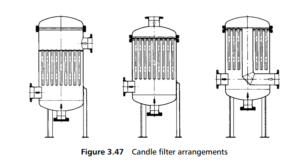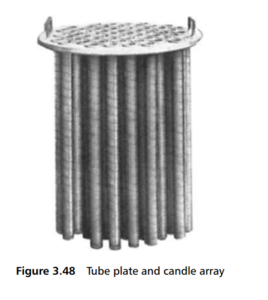0
-
An empty cart
You have no item in your shopping cart
envato-wordpress-toolkit domain was triggered too early. This is usually an indicator for some code in the plugin or theme running too early. Translations should be loaded at the init action or later. Please see Debugging in WordPress for more information. (This message was added in version 6.7.0.) in /var/www/wp-includes/functions.php on line 6121g5plus-darna domain was triggered too early. This is usually an indicator for some code in the plugin or theme running too early. Translations should be loaded at the init action or later. Please see Debugging in WordPress for more information. (This message was added in version 6.7.0.) in /var/www/wp-includes/functions.php on line 6121There is much confusion over the precise meaning of the term ‘candle filter, ‘ so let it be said that, in the present context, a candle filter is a process filter, mainly used for the recovery of process residues from liquid streams. It almost always has a
vertical cylindrical housing, inside which a multitude of cylindrical filter elements, closed at the bottom end, are suspended from a tube plate. Flow of liquid is from the outside of the element to its inside, and thence through the upper, open end of
the element into the filtrate space above the support plate. Some typical arrangements for a candle filter are shown in Figure 3.47.

The filtering element can be almost any kind of cylindrical structure, but is ideally a rigid, smooth-surfaced tube of porous metal, plastic or ceramic. Such media are available for filtration down to very low levels of particle size, and at the same time are self supporting (and so able to hang securely from the tube plate) and strong enough to resist quite high pressure drops across them. (Whilst the hanging orientation is by far the most common, the filter’s name implies an earlier usage, mounted upwards from the support plate, and thus resembling candles in a candle holder.) Candle filters with ceramic candles are widely used for the filtration of aggressive gases as well as for hot corrosive liquids.
With that definition of a candle filter understood to be the basic one, it must be accepted that the term is used of any multi-tubular filter with hanging elements. These elements can be almost any kind of cartridge filter. A tube plate with an array
of cartridge elements is shown in Figure 3.48.
A filter that resembles a candle filter is the Cricket filter (from Amafilter), which is so-named because the elements, rather than being cylindrical, are flattened so as to resemble a cricket bat in shape. Each element was suspended from a filtrate
collection manifold to which was connected an internal filtrate pipe rising from the bottom of the element. The small volume of each element and the flat surface ensured complete cake removal during blow-back.

Ask for more information, please click here.